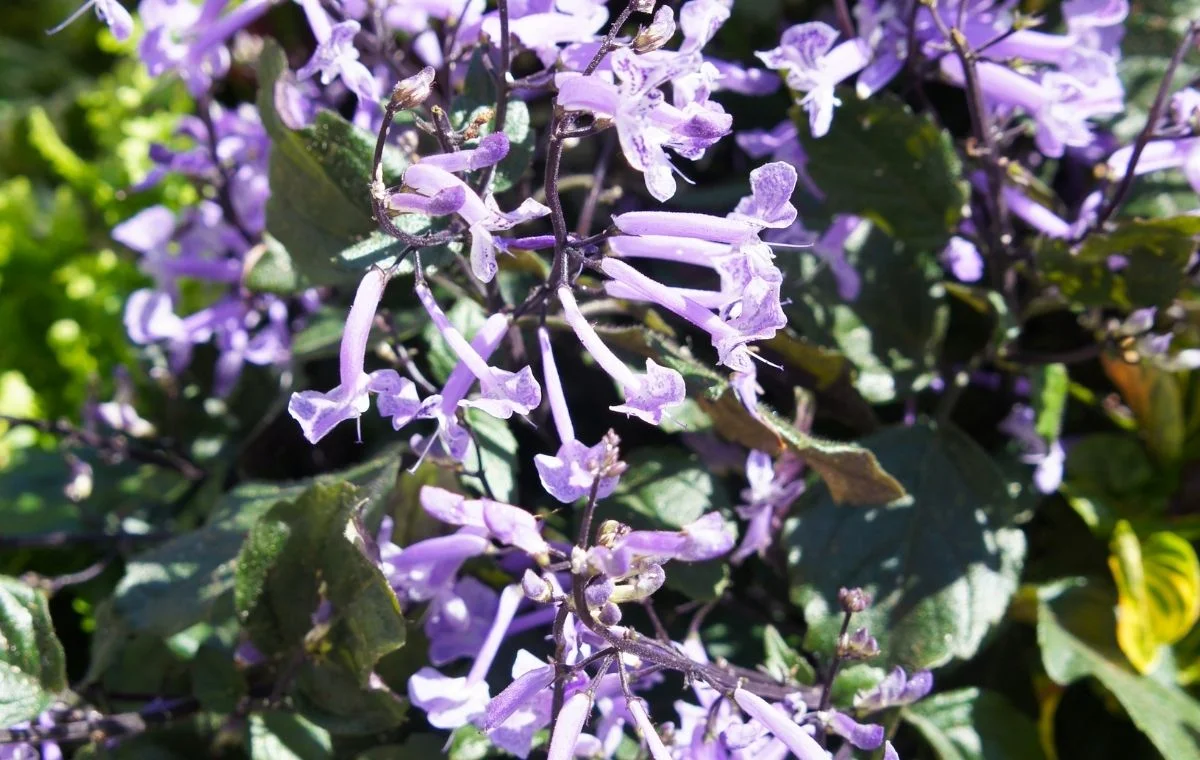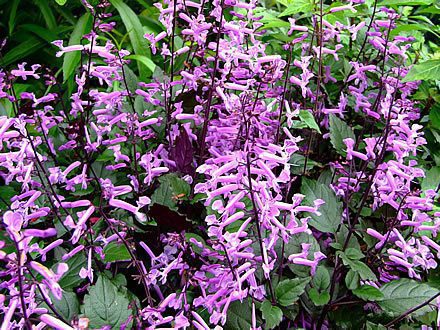Think of a plant with delicate purplish flowers, blooming throughout the year, not requiring full sun, and still being a champion of hardiness. This is the stoep jacaranda (Plectranthus saccatus), a herbaceous and very floriferous plant, native to South Africa, which has excited gardeners for its qualities as an ornamental. The genus name “Plectranthus” originates from Greek, combining the words “plektron” – spur, and “anthos” – flower, referring to the spur-like aspect of its flowers.
Similar to the Swedish ivy (Plectranthus nummularius), it belongs to the Lamiaceae family, the same family as mint and basil. The stoep jacaranda has an erect to prostrate habit, reaching about 60 cm (24 inches) in height. Its leaves are light or dark green, depending on the cultivar. They are rounded to elliptical, aromatic, with toothed margins, well-marked veins, and covered with fine glandular hairs. The upper page (adaxial face) of the leaves is green, while the lower page (abaxial) is purplish. It flowers all year round, displaying erect inflorescences above the foliage, with delicate lilac, purplish, or white flowers, dotted with lilac, funnel-shaped, resembling the flowers of the Jacaranda (Jacaranda mimosifolia). Its flowers attract hummingbirds and butterflies.
In the garden, the stoep jacaranda offers beautiful massifs and borders in partial shade, or protected under the canopy of trees and other structures. It also looks perfect in compositions with other flowers, especially plants with white, purple, yellow, or orange flowers. The purplish foliage is valued in contrast with species with variegated leaves, like variegated mint, liriope, or spider plant. It can be grown in pots and planters, thus adorning balconies and patios, or even well-lit positions inside the house. Being wind-resistant, it becomes an interesting option for growing in apartments, decorating balconies and terraces, provided it is protected from strong sun.
It should be grown in partial shade or filtered light, in well-drained, light, and organically rich soil, kept moist, without waterlogging. It enjoys mild climate and tolerates cold and wind, as long as it is protected from frosts. In subtropical climates, it tolerates full sun. Fertilize fortnightly with a soluble NPK suitable for flowering, and enrich the beds with organic matter every 3 months. Although tolerant of short periods of drought, avoid letting the soil dry out completely between watering, performing supplementary irrigation when possible. When planting in pots, prepare the substrate by mixing equal parts of sand, common soil, and high-quality organic compost.
In areas with harsh winters, it is advisable to bring the plants indoors, where they will benefit from protection and shelter and can survive near a well-lit window. Although perennial, over time the plant loses beauty, initially requiring a pruning to renew the foliage. Despite the regrowth and new flowering, after this renewal, replanting with new seedlings will be necessary. It propagates easily by division of rooted branches, by layering, and by cuttings of the branches.



